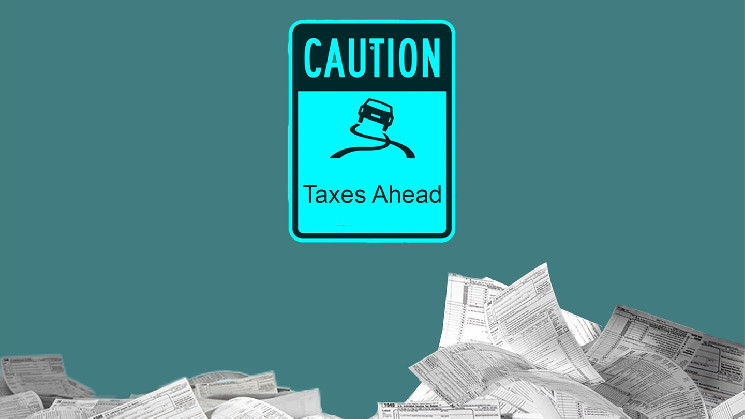
Tax-loss harvesting is a strategy that you can use to minimize your tax liability. By selling investments with unrealized losses, you can realize a capital loss that you can use to offset capital gains made on other investments or up to $3,000 in ordinary income each year.
The controversial part of tax-loss harvesting comes if and when you repurchase the investment. If you immediately repurchase the same investment, you’ve essentially represented that you lost money when you haven’t really lost anything – you still own the same asset!
The IRS discourages these superficial transactions with the Wash Sale Rule. While the agency hasn’t clarified whether the rule applies to cryptocurrencies, many regulators and legislators have expressed interest in closing what they see as a loophole.
In this article, we’ll get you up to speed on what a wash sale is, the rules applying to them, and how you can time your trades to avoid running afoul of these complicated rules.
What is a wash sale?
IRS Publication 550 defines a "wash sale" as a sale that occurs when you sell or trade stock or securities at a loss and within 30 days before or after the sale you:
Buy substantially identical stock or securities.
Acquire substantially identical stock or securities in a fully taxable trade.
Acquire a contract or option to buy substantially identical stock or securities.
Acquire substantially identical stock or securities for your individual retirement accounts.
This definition begs the question: What is a "substantially identical" stock or security?
The IRS says you must "consider all the facts and circumstances in your particular base" when making that determination. As an example of this ambiguity, ordinary stocks or securities of one corporation are generally not substantially identical to those of another. But, in a reorganization, the predecessor’s stock may be "substantially identical."
The Wash Sale Rule prohibits investors from deducting the sales or trades of "stock or securities" in a wash sale (unless you’re a dealer in stock or securities).
If you think about it, selling stock to realize a loss and immediately repurchasing the asset results in a net-unchanged economic position for you. You owned the same asset with the same economic exposure as before – you're only changing your cost basis!
The IRS doesn’t want you to deduct losses on an investment if you haven’t actually incurred an economic loss. In other words, they’re okay with deducting a loss if you sell an investment and move on to a different one. But not if you maintain your same exposure.
The only exception occurs if you sell several securities and repurchase far fewer. In that case, the IRS lets you specify which shares you want the Wash Sale Rule to apply to.
Does It Apply to Crypto?
The IRS states that the Wash Sale Rule applies to "stock or securities" but hasn’t clarified whether that means cryptocurrencies. Currently, the IRS considers cryptocurrencies "property" rather than "securities," which suggests that the rules don't apply at the moment.
However, legislators seem keen on applying the Wash Sale Rule to crypto investors. For instance, on July 12, 2023, a bipartisan group of Senators reintroduced the Lummis-Gillibrand Responsible Financial Innovation Act to create a regulatory framework for digital assets and apply the Wash Sale rule to digital assets.
Moreover, even if the Wash Sale Rule did apply to cryptocurrencies, the IRS would have to provide guidance on how to treat certain transactions. There is a lot of ambiguity surrounding how one might interpret whether tokens are "substantially identical."
For example, different tokens on the same blockchain are unlikely to be "substantially identical" because they have different functionalities and use cases. For instance, ETH and ERC-20 tokens are incredibly different in their economics and the rationale for ownership.
However, several crypto assets could fall under the "substantially identical" designation:
Cryptocurrencies forked from the same original blockchain
Stablecoins are pegged to the same underlying asset(s)
Wrapped tokens (e.g., bitcoin and wrapped bitcoin).
Since there’s no clear guidance from the IRS, these scenarios would be up for interpretation. If you’re not clear and wish to follow the Wash Sale Rule, just in case, the safest approach would be to consult a tax advisor familiar with crypto assets.
A Breakdown of the Timing
The Wash Sale Rule applies to transactions made 30 days before or after the sale. So, even if you wait to repurchase the asset until 30 days after, you also must have not purchased it originally within 30 days beforehand to avoid a wash sale.
In addition, it’s critical to remember that the Wash Sale Rule applies to all your accounts. So, even if you haven’t purchased Bitcoin in one wallet over the past 30 days, the loss may be invalid if you purchased it on a different exchange.
For example, suppose that you purchased $50,000 worth of bitcoin on Coinbase. After 40 days, the price fell, and you sold the position for $40,000, incurring a $10,000 loss. Then, in a Ledger wallet transaction, you repurchased Bitcoin for $42,000 five days later.
In this scenario, you would have to disallow the $10,000 loss for tax-deduction purposes. Instead, the $10,000 loss would be added to the cost basis of the new Bitcoin you purchased, making the new cost basis $52,000 ($42,000 + $10,000).
If you want to avoid the wash sale, the sale transaction would have had to occur between Day 10 (30 days before Day 40) and Day 70 (30 days after Day 40). Alternatively, you could have repurchased a different asset instead of Bitcoin (such as Ethereum) and realized the tax loss.
The easiest way to avoid mistiming tax-loss harvesting transactions is to use an automated tool to identify valid opportunities. By relying on algorithms, these tools can automatically determine eligible assets and factor in all your wallets, exchanges, or other accounts. For example, ZenLedger’s tax loss harvesting tool can help you pinpoint opportunities at any time because of the ability to track accurate cost-basis across an entire portfolio.
Impact of Accounting Methods
The accounting methods you use to determine cost basis could also impact your tax loss harvesting strategy. While these methods don’t directly impact the Wash Sale Rule, they can affect how a wash sale is calculated or identified and influence your taxes.
For example, FIFO (first in-first out), LIFO (last in-first out), and other accounting methods affect the cost basis of the assets you use to “replace” the ones you sold in a wash sale. This altered cost basis carries forward to future sales, affecting the calculation of your capital gains or losses.
In addition, if a wash sale occurs, the disallowed loss is generally added to the cost basis of the new "substantially identical" security. This rule may affect your portfolio differently depending on your accounting method.
The Bottom Line
The IRS’ Wash Sale Rule doesn’t necessarily apply to cryptocurrencies yet, but conservative investors may want to follow the rules anyway. If you fall under that group of investors, understanding the timing around wash sales can help you make the most of your tax-loss harvesting efforts and avoid running afoul of any future rules and regulations.
The above is for general info purposes only and should not be interpreted as professional advice. Please seek independent legal, financial, tax, or other advice specific to your particular situation.
 Earn Coin
Earn Coin Mining
Mining
 Play Games
Play Games



 Spin Wheel
Spin Wheel Miner
Miner Play & Win
Play & Win